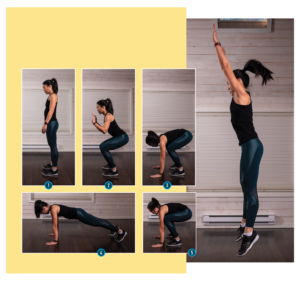
Physical activity keeps your body strong in more ways than one. Paired with proper nutrition, a strong fitness regimen can boost your immune system and help you fend off illness in both the long and short term.
How many people reading this article actually enjoy being bogged down by a cold or flu infection? Of course: no one.
And because of this fact, I’ve observed first-hand in my practice that more and more people are interested in how they can leverage nutrition, supplementation, and physical activity to bolster their immune system and minimize the frequency, severity, and duration of illness.
Similar yet different
The common cold and the flu share many symptoms and are both illnesses of the respiratory system, although they’re caused by different viruses. The flu, however, comes on more abruptly, is more severe, and is often accompanied by chills and fever.
Vitamins, minerals, immunity
Where does nutrition and supplementation fit in? When it comes to preventing colds and flu, eating plenty of fruits and vegetables is a very good idea. Many studies point to the fact that the abundant nutrients in a healthy diet—one that includes plenty of fruits and vegetables—help our immune systems fight viruses and bacteria.
Vitamin D
One nutrient important in maintaining our immune system is vitamin D, though it’s difficult to get enough through diet or, during Canada’s dark winter months, from the sun—vitamin D’s most abundant source. An increasing body of evidence suggests a link between our vitamin D status and our immune functioning.
Supplement with Vitamin D
More than one in three Canadians who don’t use vitamin D supplements have circulating blood levels of vitamin D that are suboptimal in winter.
In a US study involving 18,883 participants 12 years and older, those with higher circulating levels of vitamin D in their blood were less likely to report upper respiratory tract infections, including the flu and common cold.
Vitamin C and echinacea
According to a large 2018 systematic review of 30 studies involving the use of vitamin C and 24 involving echinacea, supplementation with vitamin C may help reduce the duration and severity of the common cold, while supplementation with echinacea showed potential for shortening their duration.
Zinc
In the same large systematic review, the authors concluded that “many studies agreed supplementation of zinc is helpful in reducing the risk of pneumonia and common cold and the incidence of respiratory tract infection, specifically in the elderly and in children.”
Exercise and immunity
Plenty of studies have pointed to the positive effects of physical fitness when it comes to frequency and severity of illnesses like colds and flu. In one study, those who were aerobically active and physically fit experienced a 41 percent reduction in upper respiratory tract infection severity and symptoms versus those who were sedentary.
More is not better
What’s particularly interesting, when it comes to the effect of exercise on the immune system, is that research shows more is not always better. The stress that frequent and intense physical activity can put on our body over time may also put a strain on our immune system.
A study looking at the effect of incorporating exercise regimens of different intensity and duration on women who were previously inactive found that although both regimens stimulated the immune activity of white blood cells, there was a greater inflammatory response in those who exercised more intensely.
In the context of our busy and hectic lifestyles, it’s much more likely that most of us get too little physical activity and probably don’t need to worry about compromising our immune systems with excessive exercise.
If you’re currently inactive, increasing physical activity levels, especially through cardiovascular activity, will have positive effects on your body’s immune system, among many other benefits.
Here are six exercises of varying difficulty that will help get you started on the path toward a stronger immune system.
Burpees

Muscles targeted: full body, chest, legs
- Lower your body into a squat by pushing your hips back and bending your knees.
- Shift your weight onto your hands by placing them in front of your feet.
- Jump back softly and land in a plank position, keeping body straight and core tight.
- Jump your feet back, landing outside your hands.
- Jump up, reaching hands in the air.
- Complete10 repetitions.
Jump Lunges

Muscles targeted: quads, hamstrings
- Start in a lunge position by stepping one foot forward and sinking down.
- Jump straight up, switch legs mid air, and land again softly in a lunge with the opposite leg forward.
- Complete 10 repetitions per leg, 20 total.
Jump Squats

Muscles targeted: quads, hamstrings
- Lower into a squat by pushing your hips back and bending your knees.
- Jump up explosively.
- Land as softly as possible, lowering back into a squat again.
- Complete 10 repetitions.
Push Press

Muscles targeted: shoulders, quads
- Hold a dumbbell in each hand, palms in, and curl the weight up. This is your starting position.
- Drop down into a partial squat.
- Press through heels, driving weights overhead in a shoulder press motion.
- Complete 10 repetitions.
Side Plank

Muscles targeted: static core-engaging exercise, important for stability and injury prevention
- Lie on your right side, elbow in contact with the ground and beneath your shoulder.
- Place your left hand on your hip, both legs elevated on a bench.
- Engage torso, creating a straight line with your body.
- Keep your abdominal, glute, and quad muscles tight.
- Hold for 60 seconds and repeat on your left side.
Downward Dog

Muscles targeted: shoulders, hamsptrings, lower back
- Start on your hands and knees with hands below shoulders, knees below hips.
- Tuck your toes, spread your fingers.
- Lift your knees off the floor and press your hips toward the ceiling while drawing your heels down toward the floor.
- Press your hands into the floor, push your shoulder blades against your back and pull them down toward your tailbone.
- Breathe, hold for 60 seconds.
Maximize your immunity-boosting workouts
Get your heart rate up
A number of studies into the effects of exercise on immune function demonstrate immune system benefits from cardiovascular activity.
Take a rest day
To get the best immune benefit out of your workouts, exercise frequently, but don’t burn yourself out.
Give your workout a caffeine boost
Caffeine is well known to help improve exercise performance, so a caffeine hit before your next workout may give you the boost you’re looking for.
Recover properly by stretching
Everyone loves breaking a sweat and getting a good pump; help your muscles recover following sweat sessions by engaging in low-intensity stretching.







